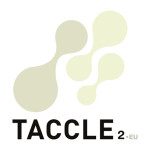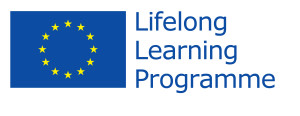Using online materials – what you need to know!
If your pupils are downloading web content (images, video, music etc.) you need only be concerned about copyright if learners are re-publishing this content to the web – say as a Blog, Wiki or presentation. Let’s assume your learners have created a Glog using www.glogster.com and they have used footage taken by themselves on a digital camera, text they’ve written themselves and pictures they sourced from the Internet. Only the web-sourced pictures would be subject to any licence, as the learners will have produced the rest of the content themselves.
This chapter will give you a brief overview of how copyright works
Intellectual Property Rights (IPR)
IPR are the legal rights over ‘creations of the mind’ these can be ideas, theories, discoveries, inventions, words, music, symbols or designs. In fact, they can be almost anything! IPR are designed to give legal protection to the creator.
Copyrights are one sort of IPR – along with trademarks, patents, trade secrets or industrial design rights.
Copyright ©
The person who creates the intellectual property owns the copyright from the moment it is created without having to take any further action. Once you create a ‘tangible expression’ of an idea in any medium, including digital works, you receive “all-rights-reserved” copyright automatically. You do not have to register or record this. However, you may give or sell the work to someone else along with the copyright.
The copyright holder has exclusive rights to
• Make copies of the work.
• Prepare derivative works based on it.
• Distribute copies of the work to the public by selling, hiring or lending.
• Present the work publicly, in the case of audio-visual productions.
• In the case of sound recordings, playing or performing the work publicly
This means you cannot download images, text, music or anything else from the web unless you have the copyright owner’s permission to do so.
In e-learning terms, there are basically two areas you need to consider; the copyright on the software you are using and the copyright on the content that you or others create. There are slightly different protocols for dealing with each.
Licensing
A licence is a contract that specifies all the rules and clauses governing the use of a particular application. They stipulate the scope of use, the installation and the copying, modifying and reproduction of the product. Below, we have listed some of the licences you may come across.
Commercial software
Retail or commercial software refers to software available only with the purchase of a licence. These may be single user licences, which may not be copied for others, or ‘multiple user licences’, which are common in schools and will almost always be marked by the word ‘Copyright’ and / or the symbol ©.
Shareware
Shareware is copyrighted software that is distributed without payment on a trial basis and is often limited by any combination of functionality, availability or convenience. That is, it might be limited to a certain number of days or the number of times that you use it or you may not be able to access all of the functions until after you have bought a licence. Shareware is often offered as a download from an Internet website or as a CD included in a magazine.
Freeware
Freeware refers to copyrighted software for which the author does not ask for payment (though they may request a donation). ALL the restrictions that apply to copyrighted software apply to Freeware. That is, you may not copy or modify it or redistribute it.
Creative Commons and Open Content – “Share, Remix, Reuse – Legally.”
Creative Commons provides free tools that allow users to mark their creative work with a range of symbols, each specifying a restriction they want put on their work. That is, the work is still copyrighted but others are allowed to use it without restriction other than those indicated by the following letters.
• Attribution (BY): You must attribute the work in the manner specified by the author or licensor (but not in any way that suggests that they endorse you or your use of the work).
• Non-commercial (NC): You may not use this work for commercial purposes.
• No Derivative Works (ND): You may not alter, transform, or build upon this work.
• Share Alike (SA): If you alter, transform, or build upon this work, you may distribute the resulting work only under the same, similar or a compatible license.
Therefore, so long as you adhere to the restrictions put on the work, you can use it. All Creative Commons licences carry the mark CC in a circle.
Copyleft
Copyleft is a form of licensing similar to the Creative Commons Share-Alike. It means the creator voluntarily gives up their rights and allows anyone who has a copy of their work to reproduce and adapt and redistribute it. However, there is an important restriction; any resulting copies or adaptations are bound by the same Copyleft licence. The Copyleft symbol is a reversed C in a circle .
‘All rites reversed.’ ‘All wrongs reserved.’
These are some of the slogans typically found on copyleft material!
Public domain software
This is software free from any restrictions as to its use, modification or redistribution. This means users have the freedom to:
• Use and study the work without limitation
• Copy and share the work with others,
• Modify work and distribute modified/derivative works.
Open Source Software (OSS)
For regular users this just means free software. For software developers it means Copyleft software i.e. free of restriction except that it cannot be reused or redistributed other than under the same licence.
How to license your own work under Creative Commons
If you’d like to learn more about HOW learners can licence their work go to the first Taccle handbook and look up the chapter on Copyright.
One way around all of this is to tell children that if they want to upload material into the public domain they have to restrict their searches for material to particular sites.
The Creative Commons site searches across other sites such as Google or Flicker and picks up those pages that have a Creative Commons licence meaning that that you are free to use the material. Don’t click on the button that says ‘commercial purposes’ or ‘modify, adapt or build on’ as this will restrict you even more.
Another rich source of material is the BBC Creative Archive, which includes material held by the BBC, British Film Institute, Channel 4, Open University, Teachers TV, Museum and Library Archive and ITN. This material is licensed under a different sort of licence that allows you to use it for educational purposes.
This post is also available in: Dutch, German, Italian, Spanish, Portuguese (Portugal), Romanian




 English
English Nederlands
Nederlands Deutsch
Deutsch Italiano
Italiano Español
Español Português
Português Română
Română Cymraeg
Cymraeg
No comments yet.